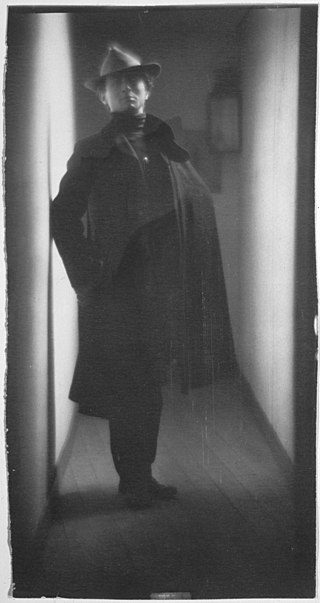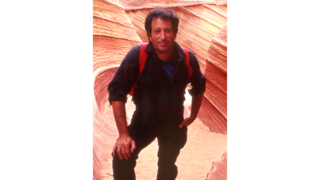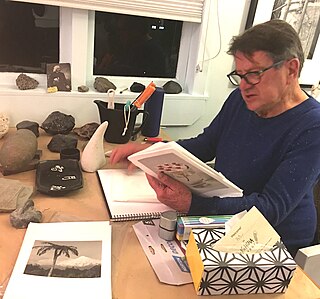Related Research Articles

Edward Jean Steichen was a Luxembourgish American photographer, painter, and curator, renowned as one of the most prolific and influential figures in the history of photography.

George Washington Wilson was a pioneering Scottish photographer. In 1849, he began a career as a portrait miniaturist, switching to portrait photography in 1852. He received a contract to photograph the Royal Family, working for Queen Victoria and Prince Albert. He pioneered various techniques for outdoor photography and the mass production of photographic prints as he gradually began to largely do landscape photography in the 1860s. By 1864 he claimed to have sold over half a million copies.

Ruth Bernhard was a German-born American photographer.

Peter Hujar was an American photographer best known for his black-and-white portraits. Hujar's work received only marginal public recognition during his lifetime, but he has since been recognized as a major American photographer of the late 20th century.

Peter Henry Emerson was a British writer and photographer. His photographs are early examples of promoting straight photography as an art form. He is known for taking photographs that displayed rural settings and for his disputes with the photographic establishment about the purpose and meaning of photography.

Raghu Rai is an Indian photographer and photojournalist. He was a protégé of Henri Cartier-Bresson, who nominated Rai, then a young photojournalist, to join Magnum Photos in 1977.
Documentary photography usually refers to a popular form of photography used to chronicle events or environments both significant and relevant to history and historical events as well as everyday life. It is typically undertaken as professional photojournalism, or real life reportage, but it may also be an amateur, artistic, or academic pursuit.

Peter Lindbergh was a German fashion photographer and film director.

The Center for Creative Photography (CCP), established in 1975 and located on the University of Arizona's Tucson campus, is a research facility and archival repository containing the full archives of over sixty of the most famous American photographers including those of Edward Weston, Harry Callahan and Garry Winogrand, as well as a collection of over 80,000 images representing more than 2,000 photographers. The center also houses the archives for Ansel Adams, including all negatives known to exist at the time of his death. The CCP collects, preserves, interprets, and makes available materials that are essential to understanding photography and its history.
Eric Meola is an American photographer. He graduated from Syracuse University in 1968 and is self-taught in the art of photography. In New York he apprenticed under photographer Pete Turner, who influenced Meola's use of saturated color and graphic design. In 1971, Meola opened a studio and began working for popular magazines such as Life, Esquire, and Time, shooting editorial photos. His work has since appeared in museum collections including the National Portrait Gallery in Washington, DC, and in Munich's Museum of Modern Art. Meola's official website can be found below.

Tony Sweet is an American photographer, known for his widely published nature photography. He is also a jazz musician, workshop instructor, and author.

Arthur (Usher) Fellig, known by his pseudonym Weegee, was a photographer and photojournalist, known for his stark black and white street photography in New York City.

Ralph Ward Stackpole was an American sculptor, painter, muralist, etcher and art educator, San Francisco's leading artist during the 1920s and 1930s. Stackpole was involved in the art and causes of social realism, especially during the Great Depression, when he was part of the Public Works of Art Project, Federal Art Project of the Works Progress Administration, and the Treasury Department's Section of Painting and Sculpture. Stackpole was responsible for recommending that architect Timothy L. Pflueger bring Mexican muralist Diego Rivera to San Francisco to work on the San Francisco Stock Exchange and its attached office tower in 1930–31. His son Peter Stackpole became a well-known photojournalist.

Peter Guttman is an American author, photographer, lecturer, television personality and adventurer, was named a Fellow of the Explorers Club, and has traveled on assignment through over 250 countries across seven continents.
Peter Bacon Hales was an American historian, photographer, author and musician specializing in American spaces and landscapes, the history of photography and contemporary art.
Otto Hagel (1909–1973) was a German-born American photographer and filmmaker. He and his wife Hansel Mieth were part of the school of socially conscious documentary photo-journalists that included Dorothea Lange, Imogen Cunningham, Peter Stackpole and Robert Capa. In the early 1930s, Hagel was a member of the San Francisco Film and Photo League.

William Jay was a photographer, writer on and advocate of photography, curator, magazine and picture editor, lecturer, public speaker and mentor. He was the first editor of "the immensely influential magazine" Creative Camera (1968–1969); and founder and editor of Album (1970–1971). He is the author of more than 20 books on the history and criticism of photography, and roughly 400 essays, lectures and articles. His own photographs have been widely published, including a solo exhibition at the San Francisco Museum of Modern Art. He is known for his portrait photographs of photographers.
Peter E. Palmquist was an autodidact photography historian and independent researcher/writer.

Peter Chanel Peryer was a New Zealand photographer. In 2000, he was one of the five inaugural laureates of the Arts Foundation of New Zealand.
References
- ↑ Peter Stackpole, 83, Chronicler Of California Trends for Life, by Rick Lyman, in the New York Times ; published May 14, 1997; retrieved November 25, 2015